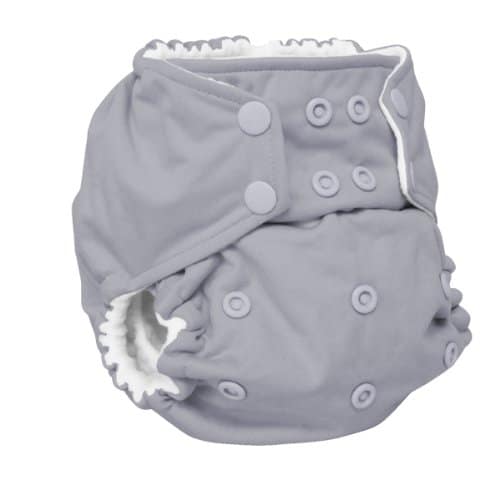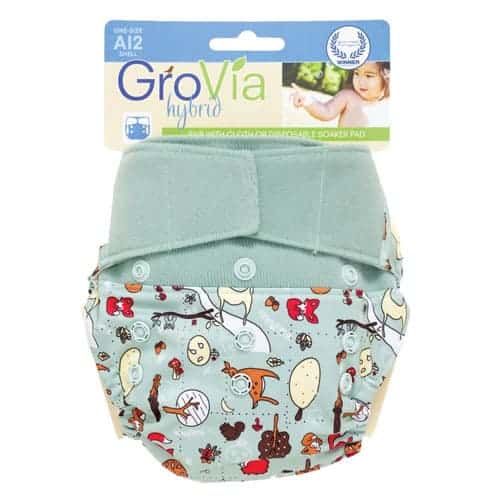Disposable diapers are the most popular but there also is cloth diapers. Cloth diapers are a very effective poop catching solution that could potentially save you huge amounts of money during your baby’s early years. If you don’t know the advantages of using cloth diapers you should think about high reusability, cost-saving, health safety, environmental friendliness, leak-proof effectiveness, etc. And for sure the biggest benefit is that you can contribute protecting our planet by reducing the number of disposable diapers which contain lots of toxins, especially Dioxin, Sodium Polyacrylate, and Tributyl-tin. Of course, your baby’ healthy will also be protected if she uses cloth diapers.
Cloth diapering can be confusing. Before I learned the ins and outs of cloth diapering it absolutely baffled me. What is the best cloth diaper? What cloth diaper is perfect for my little one? There are so many questions that need answers.
Fortunately, I have done the hard work for you. By the time you have finished reading this guide you will able to call yourself a cloth diaper expert!
How many cloth diapers do you need?
Your baby is going to poop and poop a lot. The amount of cloth diapers you need will depend on your washing schedule. The recommended minimum amount of cloth diapers is 24 (per baby, if you have twins, double this number).
If the average baby poops 6 – 10 times per day that works out to be two days before you have to wash your cloth diapers (with the remaining cloth diapers being used while the washed ones dry).
If you have the money to spare, up the quantity to 36 cloth diapers. Many moms agree that this amount will give you along enough break before worrying about having to wash them again (trust me, washing time rolls around real fast).
Types of Cloth Diapers
Before we go deeply into analyzing and choosing best cloth diapers, you need to know which system is suitable for you and your baby. In general, there are five major types of cloth diapers. Each one has its own advantages and disadvantages.
Flat/Prefold

This kind of diapers is rectangular in shape and divided into two sections, including an absorbent inner layer and a waterproof cover. The inner layer can be either a flat or a prefold. While the flat is usually a single piece of cotton and completely foldable, the prefold contains multiple layers which are sewn together and in different ways.
Advantages
- They’re the cheapest choice. That’s mostly because the cover allows several days of use without having to wash or replace.
- Versatility is another great characteristic. Not only they’re used as diapers, but you can also use them as changing pads or burp cloths.
- Besides, by folding in different ways, you can change the absorption level.
Disadvantages
- Many parents don’t like this kind of diaper because it’s complicated in use. Whether you use a flat or a prefold, you always have to fold them to fit inside the cover. Then, fasten on your baby and add the cover on top.
Fitted

This kind of diaper comprises multiple layers of absorbent material but lacks a waterproof outer layer, so you have to buy separate covers. To fasten it on your baby, you can select between the hook-and-loop closures and snap closures with no folding required. Fitted diapers usually have leg and waist elastic which hold poop and pee better than the prefolds.
Advantages
- The best thing about fitted diapers is that they’re pre-made in shape, and thus, don’t require any folding before using.
- Another major benefit is that they absorb liquid and moisture very well thanks to the multiple-layer inner lining.
Disadvantages
- Fitted diapers cost more than flats and prefolds.
- They’re relatively bulky and heavy compared to other types of diapers.

This kind of diaper is considered as the very first model of modern cloth diapers, which has appeared for hundreds of years. It comprises two sections: A waterproof outer layer and a stay-dry lining. Between them, there is a pocket opening allowing you to add one or a few inserts at a time for absorption.
Advantages
- Having a pocket means you can completely adjust the level of absorbency of your diaper. You can also switch between different types and materials of inserts. For example, using a microfiber insert during the day and a hemp one for nighttime.
- Pocket diapers are simple to use since there is no folding to deal with and no covers to add.
Disadvantages
- The biggest “nightmare” of using pocket diapers is, obviously, the process of pulling the inserts out. Sometimes, you have to put your hand into the pocket opening, and yes, this is very dirty and annoying.
- Every time you wash the insert, you have to wash the cover too. This is a minus point compared to flats and prefolds.
Hybrid (AI2s)

A hybrid diaper is a system of an absorbent insert and a waterproof cover, which is quite similar to a pocket diaper. The inserts used in hybrids can be either cloth or disposable. That’s why it is called “hybrid”.
Advantages
- They allow you two choices of inserts. Depending on your situation, you can choose the right one. For example, at home you might use cloth inserts, but disposable ones could be more convenient for traveling.
Disadvantages
- The design is often lack fits, which results in the chance for leakages.
- Using them could be a little bit complex for beginners, but with little practices, this concern will disappear.
- Disposable inserts contain SAP which takes hundreds of years to discompose. If you care about our planet, you should use reusable inserts instead.
All-In-One

Just like the name suggests, this kind of diaper includes everything in one single design: A waterproof cover, an absorbent inner layer, a wicking layer, a fastening system, and even elastic around the legs and waist.
Advantages
- Using AIOs is as easy as using disposables except they’re reusable diapers. Everything is pre-made for maximal convenience. No folding, no cover added, and no confusion!
- They’re the greatest choice in terms of containing your baby’s poop and pee. That’s because they have many layers as well as leg elastic.
Disadvantages
- Money is the key drawback. Among cloth diapers, AIOs seem to be the most expensive.
- Since they include so many things, they also take longer time to dry.
- All the parts are already sewn together. So, it’s possibly impossible to adjust the level of absorbency.
Sized Cloth Diapers – Just like clothes, these cloth diapers come in sizes. You will need to choose the size that is appropriate for your baby’s current stage of development in order for the cloth diaper to fit properly. When the diaper is outgrown you will need to purchase the next size up.
One Size Cloth Diapers – Fits your baby with adjustments on the rise of the cloth diaper through the use of snaps or Velcro. One size cloth diapers are designed to fit your baby from a few months after birth to potty training. This means less you will not need to buy several sets of cloth diapers in a single size. One Size cloth diapers generally do not fit newborns.

The above diaper is a one size cloth diaper. Using snaps you can shape a one size diaper to fit your baby as he continues to grow bigger and bigger. While not perfect for newborns, they definitely make your life easier!
Have a spot to place dirty diapers
You are not going to wash each diaper after every single diaper change. Instead you are best off having a collection of dirty cloth diapers to throw through a single washing cycle and this means you will need a place to store the cloth diapers while they accumulate.
A diaper pail will not only store your dirty cloth diapers but also help prevent them from starting to stink as well. Otherwise a wash basket kept outside in the shade and undercover is an effective solution.
[amazon_link asins=’B01N5MFXXI,B01LVWQY6K,B007VBYVXI,B007VBYVWE,B007VBYVVA,B00C7JW3GQ’ template=’ProductGrid’ store=’top777-20′ marketplace=’US’ link_id=’a643484a-ad9c-11e7-938a-df71a6564725′]
